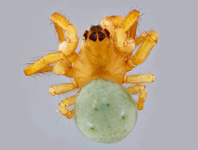Abstract
We provide a map of the 15 biogeographic provinces of Argentina based on the ecoregions recognized for the country, combining climatic, geological and biotic criteria. Argentinean provinces belong to the Neotropical region (Yungas, Paraná Forest, Araucaria Forest, Chaco and Pampean provinces), the South American transition zone (Puna, Monte, Comechingones and Cuyan High Andean provinces) and the Andean region (Patagonian, Maule, Valdivian Forest, Magellanic Forest, Falkland Islands and Magellanic Moorland provinces). In order to facilitate future biogeographic analyses, we provide a file of this biogeographical regionalisation in vector format using the World Geodetic Survey 1984.
References
Burkart, R.N., Bárbaro, O., Sánchez, R.O. & Gómez, D.A. (1999) Ecorregiones de la Argentina. Administración de Parques Nacionales y Secretaria de Recursos Naturales y Desarrollo Sustentable: Buenos Aires.
Cabrera, A.L. (1971) Fitogeografía de la República Argentina. Boletín de la Sociedad Argentina de Botánica, 14, 1–42.
Ebach, M.C. (2015) Origins of biogeography: The role of biological classification in early plant and animal geography. Springer, Dordrecht.
https://doi.org/10.1007/978-94-017-9999-7
Escalante, T. (2009) Un ensayo sobre regionalización biogeográfica. Revista Mexicana de Biodiversidad, 80, 551–560.
Löwenberg-Neto, P. (2014) Neotropical region: A shapefile of Morrone’s (2014) biogeographical regionalisation. Zootaxa, 3802 (2), 300.
https://doi.org/10.11646/zootaxa.3802.2.12
Löwenberg-Neto, P (2015) Andean region: A shapefile of Morrone’s (2015) biogeographical regionalisation. Zootaxa, 3985 (4), 600.
https://doi.org/10.11646/zootaxa.3985.4.9
Martínez, G., Arana, M.D., Oggero, A.J. & Natale, E.S. (2017) Biogeographical relationships and new regionalization of high altitude grasslands and woodlands of the central Pampean ranges (Argentina), based on vascular plants and vertebrates. Australian Systematic Botany, 29, 473–488.
https://doi.org/10.1071/SB16046
Morrone, J.J. (2014) Biogeographical regionalisation of the Neotropical region. Zootaxa, 3782 (1), 1–110.
https://doi.org/10.11646/zootaxa.3782.1.1
Morrone, J.J. (2015) Biogeographical regionalisation of the Andean region. Zootaxa, 3936 (2), 207–236.
https://doi.org/10.11646/zootaxa.3936.2.3
Morrone, J.J. (2017) Neotropical biogeography: Regionalization and evolution. CRC Press, Boca Raton, Taylor & Francis Group.
Morrone, J.J., Escalante, T. & Rodríguez-Tapia, G. (2017) Mexican biogeographic provinces: Map and shapefiles. Zootaxa, 4277 (2), 277–279.
https://doi.org/10.11646/zootaxa.4277.2.8
Morrone, J.J. & Ezcurra, C. (2016) On the Prepuna biogeographic province: A nomenclatural clarification. Zootaxa, 4132, 287–289.
https://doi.org/10.11646/zootaxa.4132.2.11
Olson, D.M., Dinerstein, E., Wikramanayake, E.D., Burgess, N.D., Powell, G.V.N., Underwood, E.C., D’Amico, J.A., Itoua, I., Strand, H.E., Morrison, J.C., Loucks, C.J., Allnutt, T.F., Ricketts, T.H., Kura, Y., Lamoreux, J.F., Wettengel, W.W., Hedao, P. & Kassem, K.R. (2001) Terrestrial ecoregions of the world: a new map of life on Earth. Bioscience 51, 933–938.
https://doi.org/10.1641/0006-3568(2001)051[0933:TEOTWA]2.0.CO;2
QGIS Development Team (2016) QGIS Geographic Information System. Open Source Geospatial Foundation. Available from: http://qgis.osgeo.org (accessed 23 May 2017)
Roig, F.A., Roig-Juñent, S. & Corbalán, V. (2009) Biogeography of the Monte desert. Journal of Arid Environments, 73, 164–172.
https://doi.org/10.1016/j.jaridenv.2008.07.016
Romano, G.M. (2017) A high resolution shapefile of the Andean biogeographical region. Data in Brief, 13, 230–232.
https://doi.org/10.1016/j.dib.2017.05.039
Sanmartín, I. (2012) Historical biogeography: Evolution in time and space. Evolution: Education and Outreach, 5, 555–568.
https://doi.org/10.1007/s12052-012-0421-2

